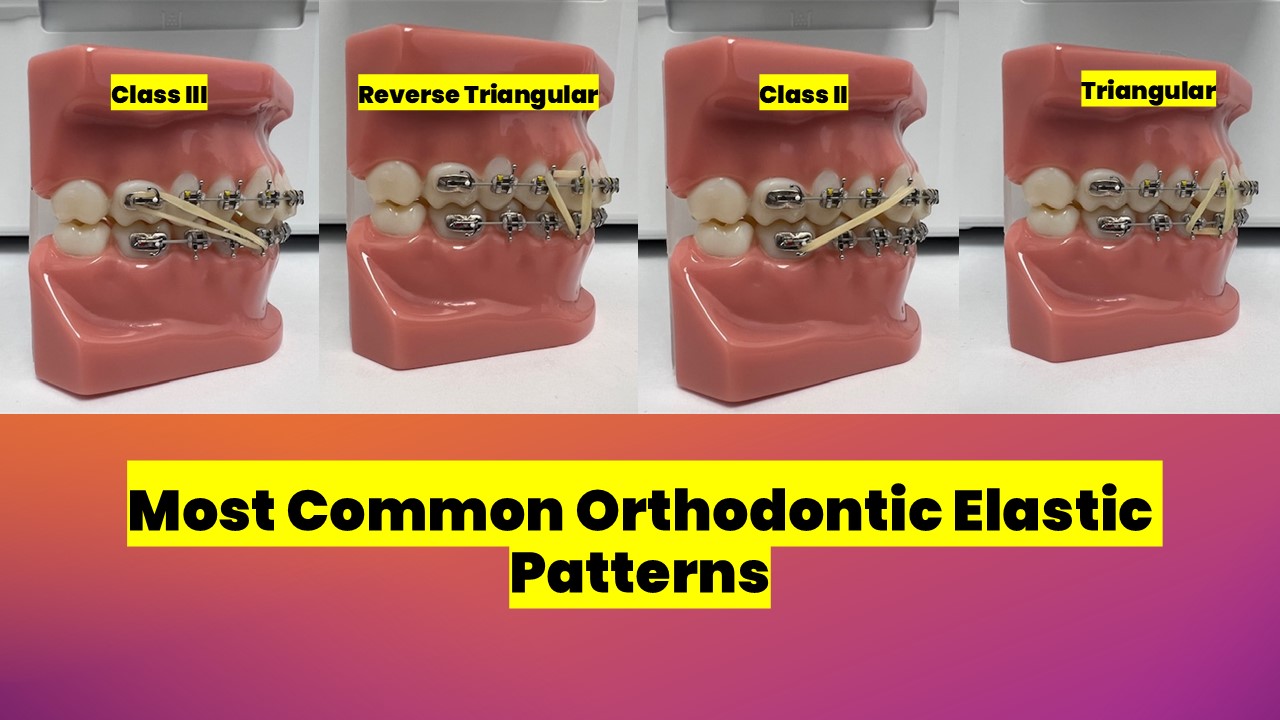
Orthodontic Elastics: What Are They and How Do They Work?
Orthodontic elastics, also known as rubber bands for braces, play a vital role in aligning your teeth and improving your bite during orthodontic treatment. They work in conjunction with braces to apply targeted pressure, guiding your teeth and jaw into their proper positions. If you’re curious about elastics, this guide covers everything you need to know, including how to wear them, when they’re used, and tips for managing discomfort.
What Are Elastic Bands for Braces?
Elastic bands are small, stretchy rubber bands that connect to the brackets of your braces. Unlike the ligature bands that hold the archwire in place, orthodontic elastics are used to correct bite alignment issues such as overbites, underbites, and crossbites.
What Do Elastic Bands on Braces Do?
Elastic bands enhance the movement of teeth and jaws by applying consistent pressure in specific directions. Their purpose includes:
- Aligning the Bite: Correcting discrepancies like overbites, underbites, and crossbites.
- Improving Jaw Alignment: Adjusting the position of the upper and lower jaws for proper function.
- Enhancing Treatment Efficiency: Helping to achieve results more quickly.
How Do Elastics Work on Braces?
Elastics are strategically placed on specific brackets to guide your teeth and jaws. Here’s how they work:
- Connection Points: Your orthodontist will attach elastics to hooks on your brackets, which may span from the upper to the lower jaw.
- Force Application: The tension created by the elastics exerts pressure, encouraging the teeth and jaws to move.
- Custom Patterns: The placement and configuration of elastics are tailored to your unique orthodontic needs.
Common Elastic Patterns
- Class II Elastics: Used to correct overbites.
- Class III Elastics: Used to fix underbites.
- Crossbite Elastics: Address crossbites by connecting teeth across the upper and lower jaws.
- Vertical Elastics: Close bite gaps or improve contact between upper and lower teeth.
When Do You Get Elastic Bands for Braces?
Elastics are typically introduced in the middle or latter stages of orthodontic treatment, once your teeth have aligned enough for bite correction. Your orthodontist will determine the appropriate time based on your progress.
How to Put On Elastic Bands for Braces
- Understand the Pattern: Your orthodontist will demonstrate where and how to attach the elastics.
- Use a Mirror: A mirror helps you see the hooks and ensure accurate placement.
- Attach to Hooks: Secure one end of the elastic to the top bracket and stretch it to connect to the corresponding lower bracket.
- Replace Daily: Elastics lose elasticity over time, so replace them as instructed—usually every 12 to 24 hours.
Do Elastics Hurt on Braces?
It’s normal to feel some discomfort or tightness when first using elastics, as they apply additional pressure to move your teeth and jaws. This discomfort usually fades after a few days as your mouth adjusts.
How to Relieve Braces Elastics Pain
- Over-the-Counter Pain Relievers: Medications like ibuprofen can help reduce discomfort.
- Warm Saltwater Rinse: Soothe sore gums with a gentle saltwater rinse.
- Stick to Soft Foods: Avoid hard or chewy foods that might increase pressure on your teeth.
- Follow Your Orthodontist’s Instructions: Wearing elastics consistently helps minimize pain over time.
Where Can You Buy Elastic Bands for Braces?
Your orthodontist will typically provide the elastics you need as part of your treatment. It’s important to use only the elastics prescribed by your orthodontist to ensure the correct size and tension. If you run out, contact your orthodontist for replacements.
Tips for Wearing Braces Elastics
- Wear Them Consistently: Follow your orthodontist’s instructions about how often to wear them—usually 22 to 24 hours a day.
- Keep Extras Handy: Carry spare elastics in case one breaks or gets lost.
- Stay Committed: Skipping elastics can delay your treatment progress.
Why Choose Elate Orthodontics?
At Elate Orthodontics, we specialize in personalized orthodontic care, including effective use of elastics to achieve your perfect smile. Here’s why patients trust us:
- Expert Orthodontists: Our team ensures you get the most effective treatment for your unique needs.
- Patient Education: We provide detailed instructions and support for wearing elastics.
- Convenient Locations: Visit us in Frisco, The Colony, or Prosper for exceptional care close to home.
Related Reading:
Affordable Orthodontics in Texas
What Can and Can’t You Eat with Braces
Illustrations of Elastic Patterns
Class II Elastics
Corrects overbites by connecting the upper canine to the lower molar.
Class III Elastics
Fixes underbites by connecting the lower canine to the upper molar.
Crossbite Elastics
Aligns teeth across the upper and lower jaws.
Vertical Elastics
Closes bite gaps or improves upper and lower teeth contact.
Ready to Enhance Your Smile?
Orthodontic elastics are a crucial part of many braces journeys, helping to align teeth and improve jaw function. At Elate Orthodontics, we’ll guide you every step of the way, ensuring you’re comfortable and informed.
Helpful Links
Let us help you achieve your perfect smile with customized orthodontic care and expert guidance!
